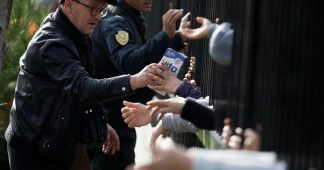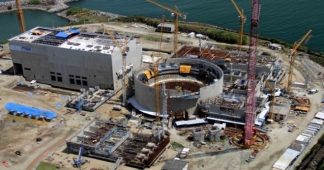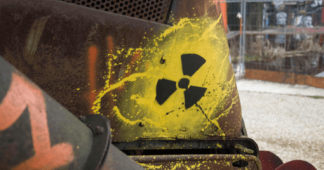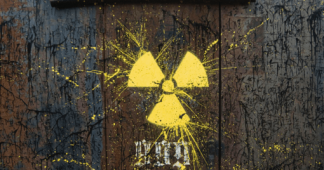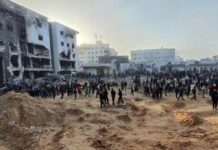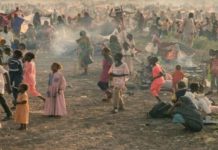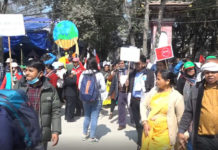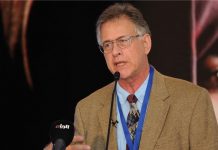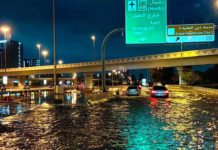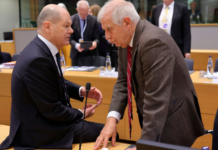An interview with Naoto Kan, Prime Minister of Japan (2010–2011)
By Yuichiro Kakutani
Mar 28, 2017
Naoto Kan was the Prime Minister of Japan during the Fukushima nuclear disaster and the 2011 Tohoku Earthquake. He is a sitting member of the lower house of the Japanese parliament and an advocate for the abolition of nuclear energy in favor of clean energy. He recently published My Nuclear Nightmare (2017) with Cornell University Press.
Yuichiro Kakutani (YK): We’ll start with questions about the Earthquake on 3/11/11 and the Fukushima Nuclear disaster, which is arguably the greatest legacy of your time in office. In a rapidly developing situation where new problems, including the Earthquake, the tsunami, the paralysis of the transportation network, and a nuclear meltdown, emerges with every passing hour, how did the PM deal with each one of these new problems, each of which require a different government response?
Naoto Kan (NK): A lot of the answers to that question is included in the book I’ve had the honor to publish with Cornell University Press. If you wish, please do buy this book. But on 3/11/11, 02:46 pm, the earthquake happened, and I immediately reported to the Disaster Management Center to deal with the situation. Reports continued to pour in without interruption. The first reports were about the earthquake itself; I heard a lot about the magnitude of the earthquake, the tsunami and its damage. Then, I heard about the nuclear power plants. I was told that all of them successfully shut down. But then an hour later, I heard that some of the plants failed to shut down. Hence, I was forced to deal with two situations at once: a huge natural disaster and the prospect of a devastating nuclear meltdown. The simultaneity of the two situation was very disorienting. But, to be honest, the natural disaster, the Tsunami and the earthquake, while devastating, was nothing unexpected. Japan is a country with lots of earthquake. Hence, we have a lot of people equipped and experienced with dealing with earthquake related disasters. So, I could safely delegate crisis management to the Japanese Self-Defense Force, and other people experienced with these sort of disasters. On the other hand, the nuclear disaster was something no one was prepared for. We had no one experienced to deal with it. I myself, was a physics major in college, so I had a rudimentary understanding of nuclear physics and reactors. So, while many politicians and bureaucrats knew how to deal with the natural disaster, I was one of the few political leaders equipped to actually understand the nuclear reactor situation. So, I had no choice but to take a lot of initiative, take matters into my own hands. As a prime minister, I knew where my competitive advantage were: so, I focused on the reactor while I delegated the natural disaster response to other individuals.
YK: So you would say this really was an unprecedented situation Japan had to face, with very little manuals to follow?
NK: It’s not just Japan. In the entire world, there were no other people who were experienced with this level of nuclear catastrophe. No one knew what to do. So, I took matters into my own hands, of course with advice from specialists in the field,to resolve that situation.
YK: I remember that you said you invited your former mentor in your University to help you out.
NK: Yes, I did receive some assistance and advice from people I knew in college. But it was not just that sort of private advice I had; I relied on the entire crisis response infrastructure of the government to deal with the situation. In the event of a crisis, I am mandated by law to create a “nuclear disaster response task force,” to be headed by me, the Prime Minister, the task force director. Supported by bureaucrats from the ministry of industry and members of the nuclear safety panel, I would make most final decisions with their help. The task of actually dealing with the nuclear reactor falls under the jurisdiction of TEPCO, the electricity company responsible for the Fukushima plants. But the other tasks of equal importance, such as deciding who must be evacuated, those decisions are made at the nuclear disaster response task force by me. But, in addition to the task force’s personnel, I did call upon other individuals to help me out, some of them from my university.
YK: It has often been said that there was a lot of friction between the task force and TEPCO, which adversely affected the crisis response. How did you secure cooperation and obtain crucial information needed from TEPCO and other uncooperative organizations, while there was much misinformation being propagated?
NK: The system of crisis response requires the cooperation between three different locations of the actual power plants in question, the TEPCO headquarters, and myself, the task force. If all went according to plan, the power plants will relay information to headquarters, and in turn, the headquarter would communicate information with me. Unfortunately, this communication apparatus was non-existent at the time of the crisis; I was often uninformed about what was happening on the ground in the initial stages of the crisis.
YK: How did you resolve that communication problem?
NK: To find the solution, lets first clarify the problem. There was really, three components to the problem. First, some communication problem spawned from the people on-site. Given the unprecedented situation, people on the ground were unaware of what was going on in their power plants. For example, at 10 pm on 3/11, we were informed by the on-site staff that there was enough water to cover up the nuclear rods. According to what we found out later, in reality, by 10 pm, the water had already evaporated and the rods were exposed to the atmosphere.This inaccurate problem happened because the people on-site were not aware that the water meters were malfunctioning. Secondly, the people in headquarters were unaware of what was going on. For example, when we were trying to open up the vents of the power plant but the vents failed to open, the TEPCO headquarter were at loss of words; they could not explain what was going on in their own reactors! I asked their vice-president, “why are the vents not opening,” and he said, “I don’t know.” The headquarters clearly were not aware of the situation. Hence, I bypassed the headquarters and directly visited the nuclear power plant site to talk with the people on the ground. They provided me a satisfactory explanation. Thirdly, a lot of communication problems stemmed from the tendency of TEPCO to hide unfavorable information from me and the public at large. For example, TEPCO headquarters and the people on site actually had a live TV-feed from the start of the crisis, which meant the headquarter received real-time update from the people on site. This TV-feed, except the small excerpts that TEPCO had released, especially the first 24 hours,is still unavailable to anyone outside the company. As a result of the TEPCO’s tendency to hide unfavorable facts, a lot of communication did not make it up upstream to me or the task force. To return to the question as to how I resolved the problem. For example, when TEPCO vice president told me he did not know why the valves were not working, I realized there was no point in using headquarters as an intermediary, so I flew in to the power plant site to meet the plant chief, Mr. Yoshida. Mr. Yoshida provided me an excellent answer about the valve question. The valve usually requires electricity to open. But, electricity is out, so the valve must be opened manually. But, given the high radioactivity near the valve, the staff tasked with opening the valve were only allowed to work on the valve for ten minutes at a time, greatly slowing down the process. But, Mr. Yoshida assured me, even if it requires forming a Keshi-tai (A squad of those prepared to die), he would get the valve closed as soon as possible. Given the assurance he gave me, I felt relieved, I told him to go on doing his job, and I left. So, given the lack of communication for the three reason I told above, I thought then, and still do to this day, it was crucial for me to actually get my boots on the ground and talk directly with the people on-site. Now, the Japanese media was not very happy about the commander in chief leaving Tokyo to directly visit the site; they said I caused more confusion by visiting the site. But, I do think visiting was crucial to first get to know Mr.Yoshida as a person, and also to obtain crucial information required for decision making right from the source.
YK: It’s been recorded that you left the site saying “I can trust Mr.Yoshida.” So you think establishing a direct communication route from you to the people on-site was crucial for resolution of the crisis?
NK: Yes, even after I left the site, the visitation created a direct communication route between, say, members of my cabinet or my secretary officer and Mr. Yoshida. Furthermore, as you said, I was able to get to know Mr. Yoshida in person, and really feel that this guy is trustworthy and knows what he is doing. Actually visiting was crucial.
YK: Regarding the third problem you identified: the non transparent nature of the TEPCO bureaucracy. To resolve the hesitation of TEPCO to reveal unfavorable situation, you established an office within TEPCO headquarters that directly reports back to you. Many in the media frowned upon this as strong-arming, but do you think this was crucial for resolving the situation?
NK: Yes I do. I was told a few days into the crisis by the TEPCO headquarters that they wanted to pull out the on-site crew, even though the situation was only deteriorating, because the radiation levels near the plant were reaching dangerous levels. In response, I told them, specifically the president of the company, that I understand the danger, but if we pull out now, all of the four reactors would experience meltdown, and we would have the worst-case scenario on the hand. I called the president and convinced him to stop pulling out from Fukushima. Furthermore, I said, to promote further cooperation, we should build an integrated command structure within TEPCO. So, I personally visited their headquarters at four in the morning, installed Mr. Hosokawa, my left-hand man, as a permanent presence within TEPCO. This integration of command structure really contributed to resolving the communication crisis. In fact, remember the live-TV feed between headquarters and on-site? I never knew that existed, until I actually visited TEPCO headquarters and planted an integrated command structure there. That’s when I realized, despite the fact that the TEPCO had complete awareness of what was going on on the ground, until I established the command structure, they chose not to disclose a lot of information with me.
YK: I can’t believe they didn’t even tell you about the TV feed…
NK: Right! When reactor number two experienced a Helium explosion, I could see that the explosion happened on the news shows on TV. But nevertheless, it took TEPCO two more hours to report to me that an explosion occurred. Can you believe it? I learned about the explosion on public television way before TEPCO told me about it! This, and many other incidents concerning TEPCO miscommunication, convinced me that TEPCO not only delays communication but actively withholds information, and that imposing an integrated command structure is the only way to resolve the situation.
YK: Going back to your decision to visit the actual power plant site. Prior to departure to Fukushima, you have been quoted for telling the TEPCO executives “if you are over the age of sixty, it’s okay if we die. I am going too, you guys better come.”
NK: I don’t think I said “it’s okay if we die.” But I told the TEPCO CEO, “I am over sixty, and you are over sixty too, right? In these sort of situation, we, the top-brass, should directly visit the site, to convince the young people working there that ‘we are working hard too and are willing to sacrifice just as much.’” Its no secret that young people lose more from radiation poisoning, given its effect on reproductive organs. People who are over sixty don’t really get pregnant, though; the radiation poisoning is exclusively our problem. I knew that there was radiation risk, but for the greater good and the well-being of our nation, we needed to resolve the situation before the radiation spread any further. So, we had to show the young people, the people actually doing the work, that people with responsibilities, such as the CEO or the Prime Minister, are fighting alongside you.
YK: So this was all to raise morale for those on the front line?
NK: Yes. Of course, the media was not very happy about what I said, what I did to the executives. But, to this day, I think it was necessary.
YK: There has been a lot of media criticism about what some call your “strong-arming” and extra-constitutional approach to the crisis. But at the same time, some believe “only someone as stubborn and demanding as Kan could have maintained government operation under that sort of stressful situations.” Do you still believe that sort of measures were necessary for the greater good?
NK: Well, from a constitutional standpoint, I did stay within the constitutional bounds. Like building an integrated command structure: that was me exercising rights delegated to me as PM by the nuclear disaster law. Of course, usually the PM does not make interjections into private companies. But, under extreme circumstances such as this, it is allowed and that’s why I did it, of course with the agreement of the CEO. So, rather than overstepping what is permitted by law, I pushed the laws to its limit, doing everything that I was legally allowed to do to save Japan. I did everything in my power I can do legally, but I pushed the legal boundaries.
YK: It was an extreme situation, after all.
NK: Right. I was aware of the Chernobyl disaster before Fukushima. I knew what sort of decision Gorbachev had to make. He sent in the fire fighters, and then the soldiers, to build a concrete coffin around the reactor; in the process, a lot of people died. In that sort of extreme situations, it was, at the end of the day, my responsibility, to make the hard decisions. So, I told TEPCO, for the sake of the country, do not pull out despite the danger, and please do your best. Fortunately, unlike in Chernobyl, no one died from rapid radiation poisoning, but nevertheless, it was a decision I was ready to make.
YK: As the commander-in-chief, you sent off many Keshi-tai, such as the JSDAF helicopter crew that flew over heavily radiated space to dump water onto the plants, or the TEPCO crew responsible for opening the valve. With what sort of emotions did you send off men who were prepared to die for the greater good, if need be?
NK: Well, I am not sure if I would have sent them in if it was 100 percent sure they would have died. But, if we did nothing, loss in human lives will come in other forms anyways. For example, in the absolute worst case scenario, those living within 250 km of the plant would have had to evacuate. That would have required the evacuation of 5,000,000 Japanese, 40% of our population. I would presume, the evacuation operation alone will cost many, many Japanese lives. Hence, it was required to do our utmost, especially TEPCO, Firefighters, and JSDAF. The JSDAF helicopter force you were talking about, we, after failed attempts, finally found a contraption to bring in water into the reactor using a huge container usually used to move around concrete. The water was evaporating at a rate of 80 tons per day; their jobs were crucial, and I am very grateful to these men.
YK: Out of curiosity, to what extent was the government prepared to deal with the worst-case scenario, in which, as you said, a quarter of the population would have to be evacuated?
NK: The worst-case scenario was envisioned by the nuclear power committee, different from the nuclear safety committee. I asked a specialist there to estimate the worst-case scenario, and they outputted the value of evacuation of civilian living within a radius of 250 km from the plant. That said, they released the scenario on 3/25, and we already were pouring water onto the plants by the 17th, so the situation appeared contained by that time. Of course I had the worst case scenario in some corners of my mind, but we never went as far as to actually plan out a concrete evacuation plan. That said, if I had to do that, it would have been immensely difficult. Back in the Kanto Earthquake of 1923, the government had authority to conscript all the trains and cars in the country to deal with the situation. Pretty much, back then, the Japanese military centrally controlled the situation. In the present days, the Japanese government is not allowed by law to have that sort of authority; hence, we would have really struggled to organize a government supervised evacuation of Eastern Japan.
[…]
YK: Which crisis response policy were you most proud of? Most regretful of?
NK: As for what I regret. We had this simulation software called SPEEDY, which predicted the movement of radioactive particles across the atmosphere. We had two types of evacuation plan. When we first thought that the reactor was going to blow up, we just got everyone within a certain radius of the plant to evacuate, from 5, 20, 30 km. The other type of evacuation plan would have predicted the location where the radiation particles were moving using SPEEDY, and then evacuated people ahead of time from those locations, even if they were outside of the evacuation radius around the plant. Unfortunately, due to bureaucratic incompetency, the information about this simulation software never reached my ears. As a result, this simulation was not applied for initial crisis response, to adverse effects. For example, there was a valley town, far away from the plant, where many people evacuated. Unfortunately, a lot of radioactive materials floated down into the valley, and people actually evacuated to a location where there was more radiation. I really feel bad for the people who evacuated there, although it’s not entirely my fault that the software data did not reach me. As for what I am proud of. I am proud that the JSDAF was able to successfully pour water into the plants. If the water ran out from the plant, we would have had to evacuate a lot of people.
YK: Moving on to questions about the PM and Japan after the nuclear crisis. A lot of foreign media pointed out that there still exists in Japan a “nuclear village,” which, like the American military-industrial complex, is formed by several powerful groups whose interest is to promote nuclear power. Do you think such a community exists in Japan?
NK: Yes. The nuclear village includes the actual electricity company using nuclear power plants, the manufacturing company that produces the equipment needed for the nuclear plants, like Hitachi, and of course the relevant bureaucratic organizations in Japan. The nuclear village continues to exist, despite the fact that we experienced Fukushima, and it still propagates a lot of political corruption and shady business deals. The nuclear village is founded upon a law which permits electricity companies to always sell electricity at three percent of the total production cost, irrespective of actual market conditions. As such, unlike in normal fair competitions, it is in the interest of both the electricity company and those who sell equipment to them, to acquire required equipment at high prices; as such, many Japanese manufacturing corporations earn a lot of money from the nuclear energy trade. As a result, there are still many interested parties, including labor unions, who prefer to retain the lucrative nuclear energy trade.
YK: After the end of your Prime Ministership, several nuclear reactors have resumed operations. How do you intend to pursue your vision of “zero nuclear plants” without adversely affecting the economy?
NK: Actually, when you look at it, we had 54 nuclear power plants providing 30 percent of the Japanese energy need prior to the crisis. After 3/11, for two years, we had no nuclear plants active. Today, we have three plants in operation, providing 3 percent of Japanese energy need. If anything, the current state of Japan proves that our country can sustain itself economically without nuclear power. Sure, prior to the disaster, we were reliant on nuclear power,but not anymore. Electricity needs can be met without nuclear power. Given this evidence, my vision is to gradually permanently deactivate all nuclear plants, while temporarily using more coal powered or gas powered energy production. But, in the long term, Japan should transition to solar energy and other clean energy. This is no far-fetched vision. Germany for example, plans to deactivate all nuclear energy by 2022, and supply 80 percent of the energy demand using clean energy.
YK: Last year, you received the anti-nuclear power award in Frankfurt, Germany. Please tell us about your anti-nuclear activism after leaving office.
NK: A lot of countries, such as Germany, are still very curious about the Fukushima crisis. As such, many nations actually invited me to come talk about my experiences dealing with the crisis. For example, a few years ago, I was invited to California to join an activist group that sought to permanently deactivate a nuclear plant that was temporarily out of commission. We did successfully permanently shut it down. I was also invited in Korea to speak in favor of decommissioning a plant; the plant did shut down. In Taiwan, I contributed to abolishing nuclear power from the island entirely. Furthermore, I am doing a lot of activism for green energy. Green energy has huge implications for Japan and the world. While Japan does not have oil, we can use green energy to achieve energy independence for the first time in history! What this means is that, all nations, not just Japan, can achieve energy independence by using green energy. This would mean that we can abolish conflict over energy sources like oil, which has historically been a common cause of war. Green energy can contribute to global peace.
YK: Why did you choose to publish a book with Cornell University Press?
NK: I first published this book in Japanese. Unfortunately, the Japanese publisher I employed did not have a lot of connections with foreign publishers. Fortunately, there was a German professor, who could read Japanese, who translated the text into Germany. Then, at a book fair in Frankfurt, the professor introduced me to Cornell University Press. I am very grateful to this professor. To have an English translation means I can reach not just American and British audiences, but so many people in the world.
YK: When you were resigning from Prime Ministership, you said “how I would be evaluated by history, the next generation will decide.” It has been six years since the nuclear crisis. How do you think history has begun to remember you?
NK: I do think that, as people are becoming more aware of what actually happened in the disaster, people are getting a better idea of what I did, but I don’t think there is a historical verdict yet. But, as post-mortem investigations of the incident continues, I am sure we would one day reach an objective assessment of my legacy.
YK: Going back to the beginning of your political career. You were a STEM major in college. Why did you join the student movement, and later the people’s movement in Japan?
NK: I went to college in 1969, when there was a global student power revolution. My college was not exempt from the universal trend, and we even had a student strike for half a year. Joining those student movements was definitely a turning point in my life. A second turning point was when I joined a people’s movement to elect into power Ichikawa Fusai, a prominent female politician, into office. Seeing Fusai do so much in office after we elected her into office was a key factor in inspiring me to join politics.
YK: Finally, you are one of the few Japanese politicians who became the Prime Minister without relying on interest groups or inherited dynastic ties. How were you able to rise to power without relying on conventional sources of power?
NK: As you said, my parents were not politicians, they were engineers. Usually in Japan, children of politicians become politicians, but that was not the case for me. I guess I have my roots in the student protests of the 60’s and the people’s movement of the 70’s. You know, I lost the congressional race three times before I was elected into office. But soon I joined a small political party, than we started absorbing other small parties into a larger platform, and that was the foundation of my power. Of course, I put in a lot of effort on my own, but at the end of the day, I was blessed with a good party and good sempais (older mentor figures).
This interview was conducted in Japanese on 3/27/2017, and subsequently translated into English by the author. Thank you to the Einaudi Center for International Studies at Cornell University for making this interview possible

